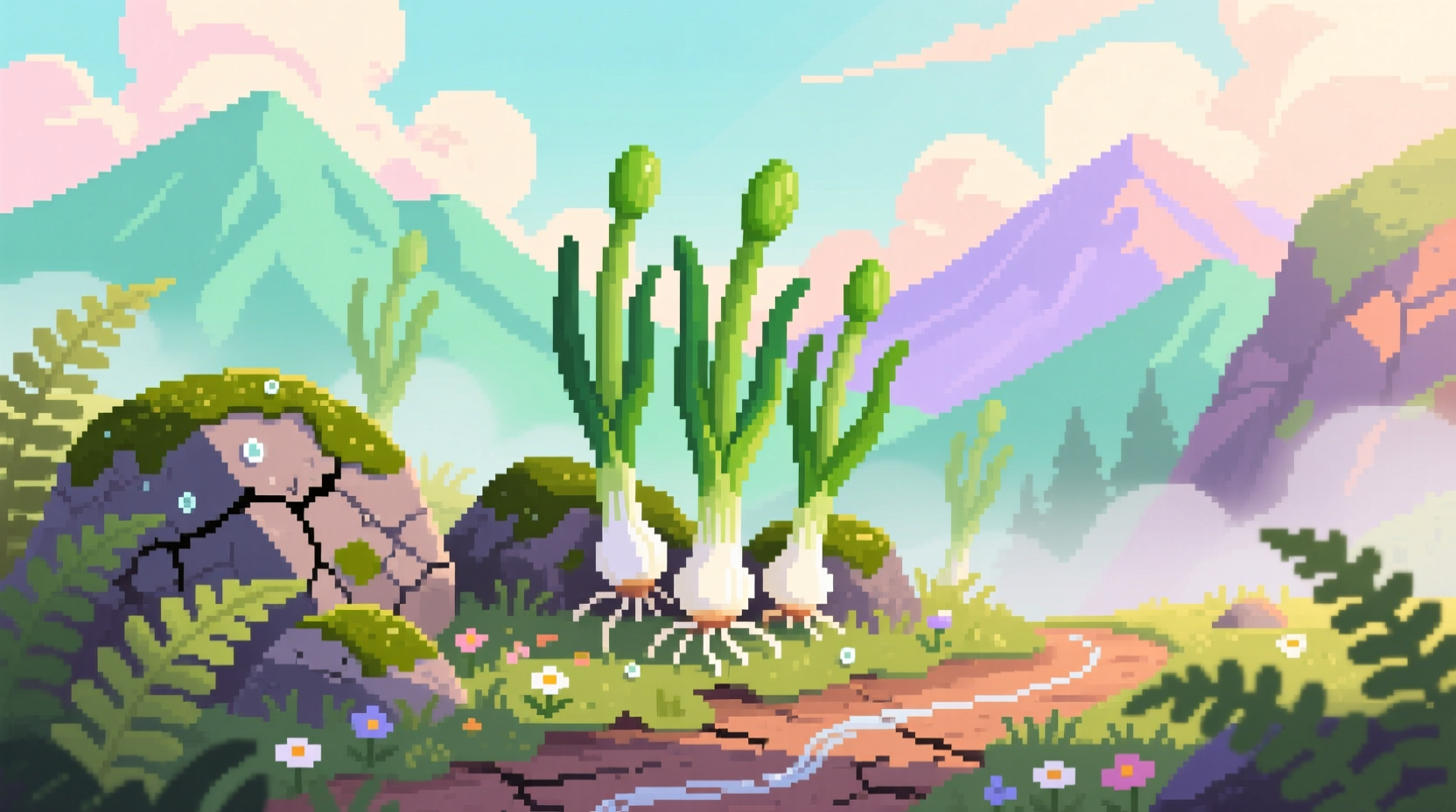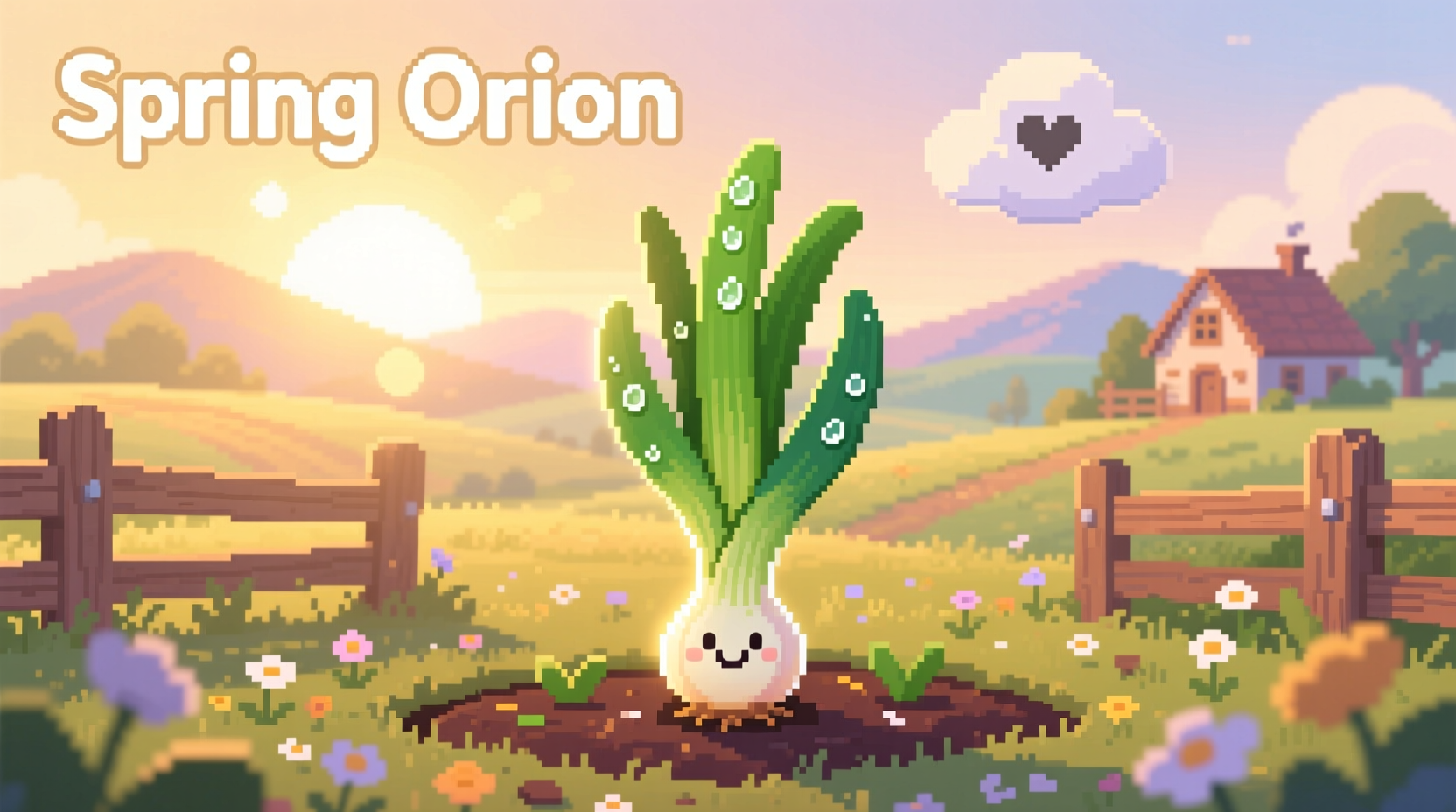As a new farmer in Stardew Valley, discovering spring onions might feel like stumbling upon hidden treasure. Unlike most crops, these valuable plants appear naturally across your farm and the mountain area starting on Spring 2. With no seed cost and a rapid 3-day growth cycle, they represent one of your most efficient income sources during the critical first weeks of gameplay. Let's explore how to maximize this free resource to accelerate your farm's development.
Why Spring Onions Are Your Early Game Secret Weapon
During your first Spring season, financial resources are extremely limited. You need gold for essential upgrades like the watering can, seeds for future crops, and building materials for animal coops. This is where spring onions shine—they provide immediate value without any investment.
Each spring onion sells for 25g (up to 37g with farming level bonuses), and since they regenerate daily after initial harvest, they create a steady income stream. During the first 14 days of Spring, properly managed spring onions can generate between 350-500g—enough to cover your first watering can upgrade or purchase turnip seeds for proper farming.
| Crop | Days to Grow | Initial Cost | Daily Profit (Early Game) | Total Profit (First 14 Days) |
|---|---|---|---|---|
| Spring Onions | 3 (then daily) | Free | 25-37g | 350-518g |
| Turnips | 4 (single harvest) | 20g/seed | 16-24g | 240-360g |
| Potatoes | 6 (single harvest) | 50g/seed | N/A | 0g (harvest after day 14) |
Where to Find Spring Onions and How to Maximize Yield
Spring onions appear in two primary locations:
- Mountain Area: Starting Spring 2, you'll find 3-5 spring onions growing near the mine entrance. These continue producing daily throughout Spring.
- Your Farm: On Spring 14, 5-7 spring onions appear randomly across your farm tiles. These also produce daily until the end of Spring.
Pro tip: Check these locations every morning without fail. Missing a single day's harvest means losing potential income that can't be recovered. During rainy days when regular farming is impossible, collecting spring onions provides valuable activity that keeps your daily routine productive.

Strategic Uses Beyond Selling
While selling provides immediate cash, consider these alternative uses for maximum benefit:
Cooking Applications
Spring onions serve as key ingredients in several early-game recipes:
- Fried Egg: Requires 1 spring onion + 1 egg (recovers 65 energy)
- Ratatuille: Requires 1 spring onion + 1 tomato + 1 eggplant (recovers 130 energy)
These dishes provide essential energy restoration when you're exploring the mines or completing community center bundles. The energy efficiency makes them particularly valuable before you unlock better cooking recipes.
Gifting Strategy
Several villagers appreciate spring onions as gifts, making them valuable for relationship building:
- Loved by: Lewis, Pam, Pierre
- Likey by: Caroline, Demetrius, Evelyn, George, Marnie, Robin, Sandy
Gifting spring onions to Lewis early in Spring can help complete the first community center bundle faster through his quest rewards. This strategic gifting provides more value than immediate selling in certain situations.
When Spring Onions Lose Their Advantage
Spring onions remain valuable throughout Spring, but their relative importance decreases as your farm develops. By mid-Spring, you should transition to planted crops for several reasons:
- Turnips begin producing on day 5 with higher profit potential per tile
- Blueberries (Summer) offer significantly better returns
- Your farming skill level increases, improving profits from planted crops
Consider spring onions your financial bridge between Day 1 and when your planted crops become productive. Once you've purchased your first watering can upgrade and have turnips growing, you can prioritize other activities while still collecting spring onions as supplementary income.
Common Spring Onion Mistakes to Avoid
Many new players miss opportunities with this free resource:
- Not checking daily: Spring onions regenerate every day—missing one day means lost income forever
- Overprioritizing: Spending excessive time searching for additional spring onions beyond known locations
- Wasting on disliked gifts: Giving spring onions to villagers who dislike them (like Abigail or Sebastian)
- Ignoring cooking value: Selling all spring onions instead of reserving some for energy-restoring recipes
Spring Onion Timeline: Your First 14 Days
Understanding when spring onions appear helps optimize your early game strategy:
- Spring 2: First appearance in mountain area (3-5 plants)
- Spring 3-13: Daily harvest from mountain location
- Spring 14: Additional 5-7 plants appear on your farm
- Spring 15-28: Harvest from both mountain and farm locations
This timeline creates two distinct income phases: days 2-13 with mountain-only collection, and days 14-28 with both locations available. Plan your early upgrades accordingly—those first two weeks of income determine whether you can afford critical early upgrades.
Advanced Spring Onion Strategy
For players aiming for optimal early game progression:
- Save 2-3 spring onions for cooking during rainy days when energy management becomes critical
- Gift excess spring onions to Lewis before Spring 15 to trigger his "Help Wanted" quest for additional income
- Use spring onion profits to purchase turnip seeds on Spring 3-4, creating overlapping income streams
- Preserve some spring onions in your chest for the first rainy day when regular farming isn't possible
These advanced techniques can increase your total Spring income by 15-20% compared to simple daily selling, providing crucial resources for faster farm development.











 浙公网安备
33010002000092号
浙公网安备
33010002000092号 浙B2-20120091-4
浙B2-20120091-4